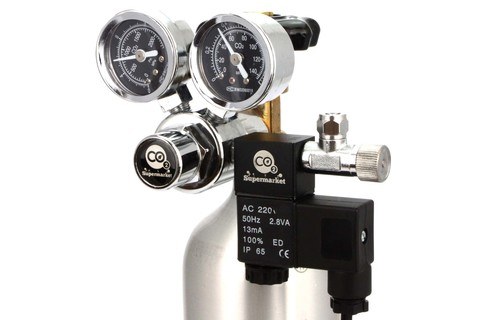Free UK Shipping
On Orders £30+. Next Day on Orders £80+
Same Day Dispatch
Weekday Orders Placed Before 3pm
Free Returns
100% Satisfaction Guaranteed
Lifetime Support
With Extended Warranties
Free UK Shipping
On Orders £30+. Next Day on Orders £80+
Same Day Dispatch
Weekday Orders Placed Before 3pm
Lifetime Support
With Extended Warranties
Single Stage CO2 Regulator Setup Instructions
Buy This Regulator Here
Know Your Regulator
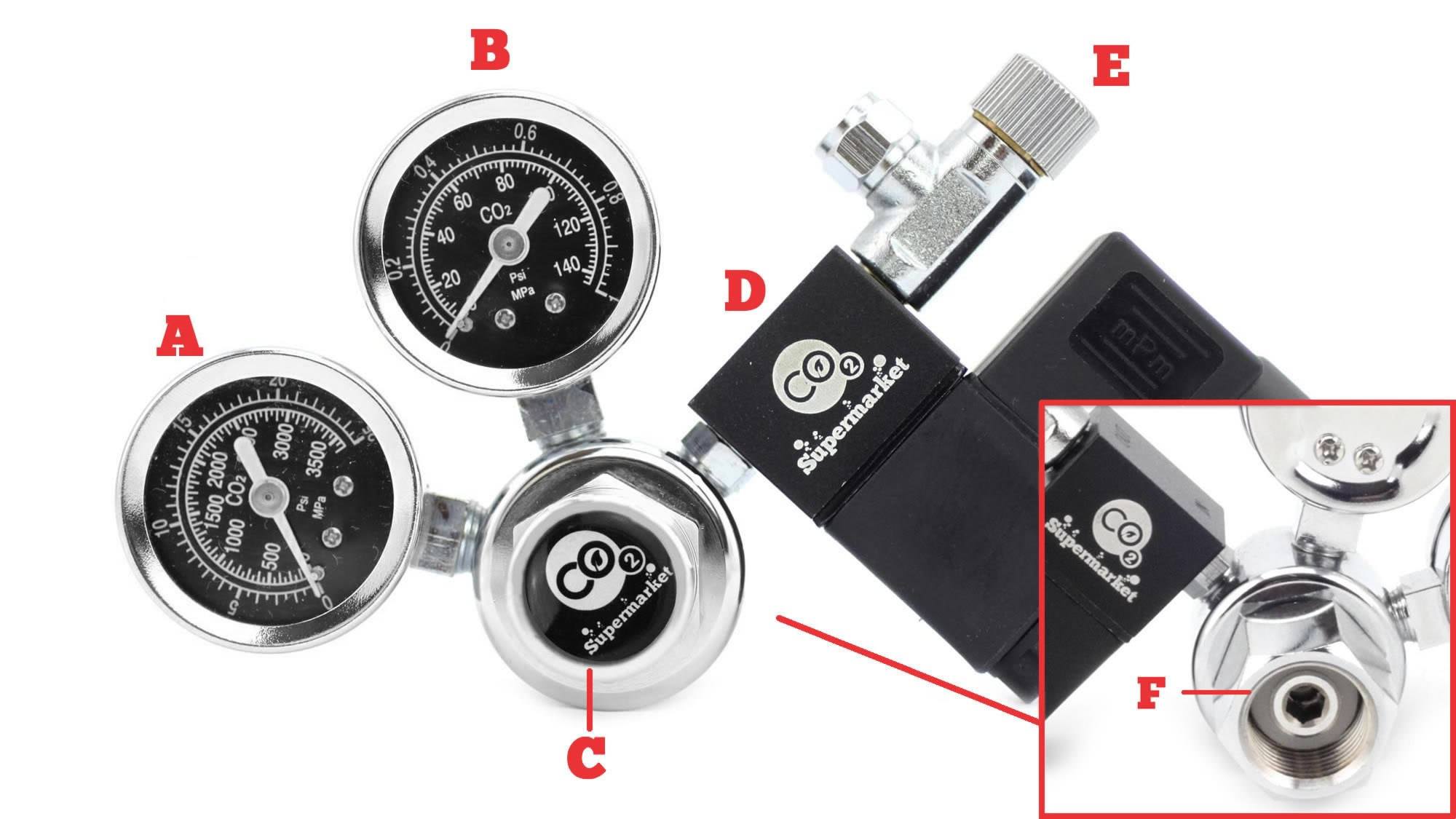
A: Cylinder pressure gauge.
B: Working output pressure gauge.
C: Not adjustable Do not attempt to adjust this feature.
D: Solenoid valve. Plug into a timer plug or pH controller to only dose CO2 at specified times and durations.
E: Needle valve adjuster; varies the CO2 dose. Turn anticlockwise to increase flow, clockwise to decrease flow.
F: Nut: must be tightened using wrench / spanner.
Video
Step-by-Step
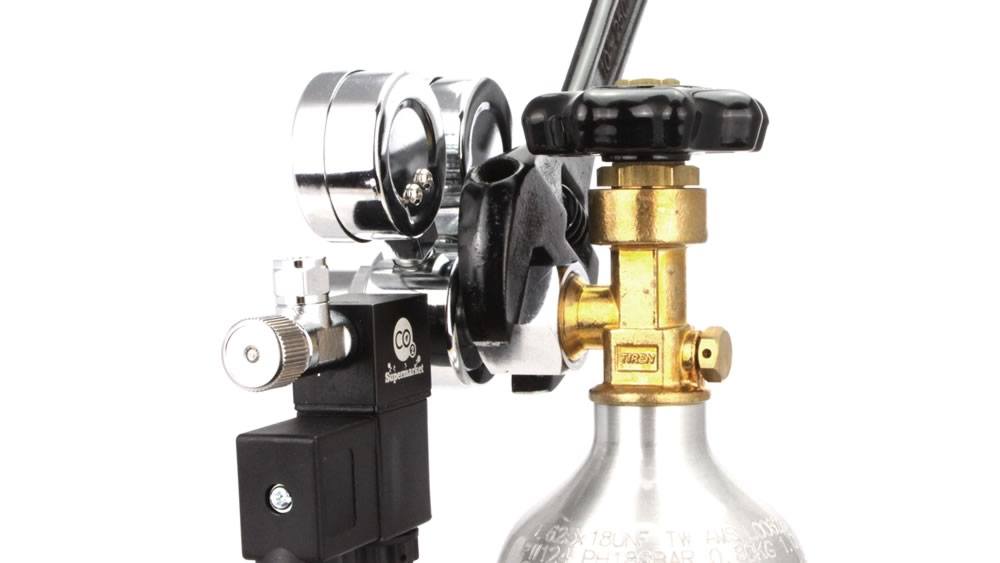
Step 1) Tighten the regulator to your CO2 cylinder using a spanner or wrench. Do not hold the regulator while tightening; allow it to freely rotate. If you hold the regulator while tightening the nut, then the friction between the nut and the stem can cause the stem to turn anticlockwise and unscrew from the main body of the regulator, which will result in a leak.
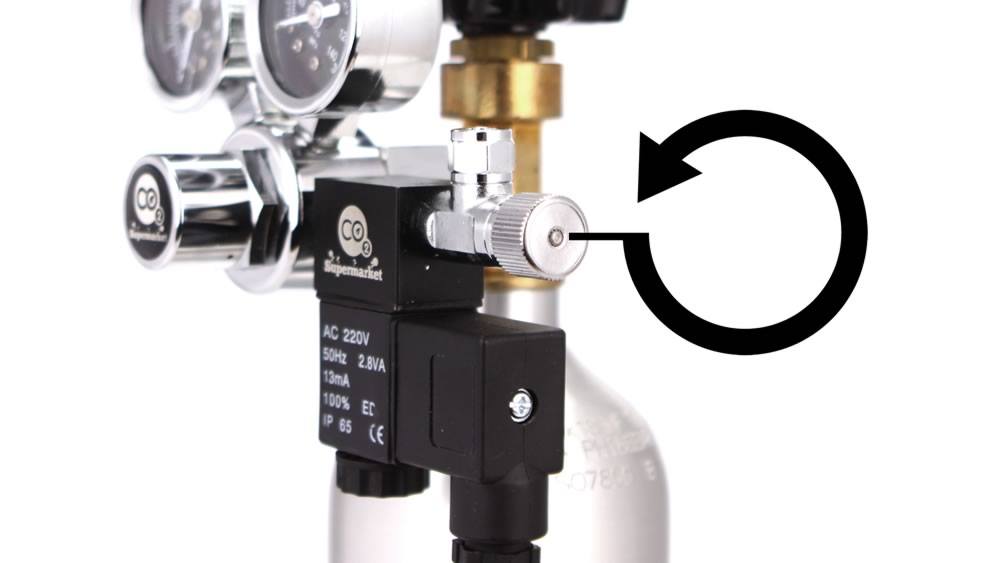
Step 2) Fully open the needle valve by turning anticlockwise.
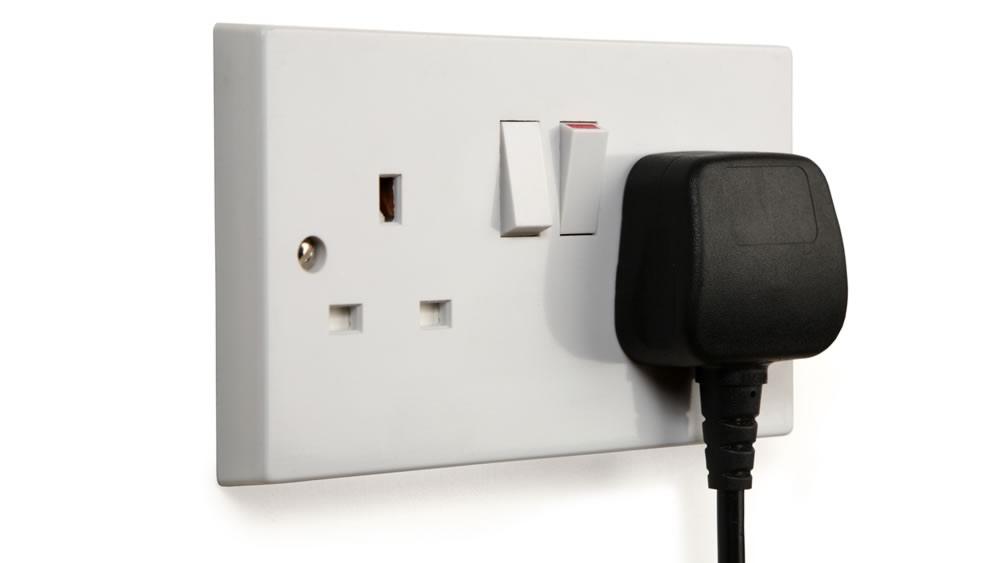
Step 3) Plug the solenoid into a mains plug and switch on.
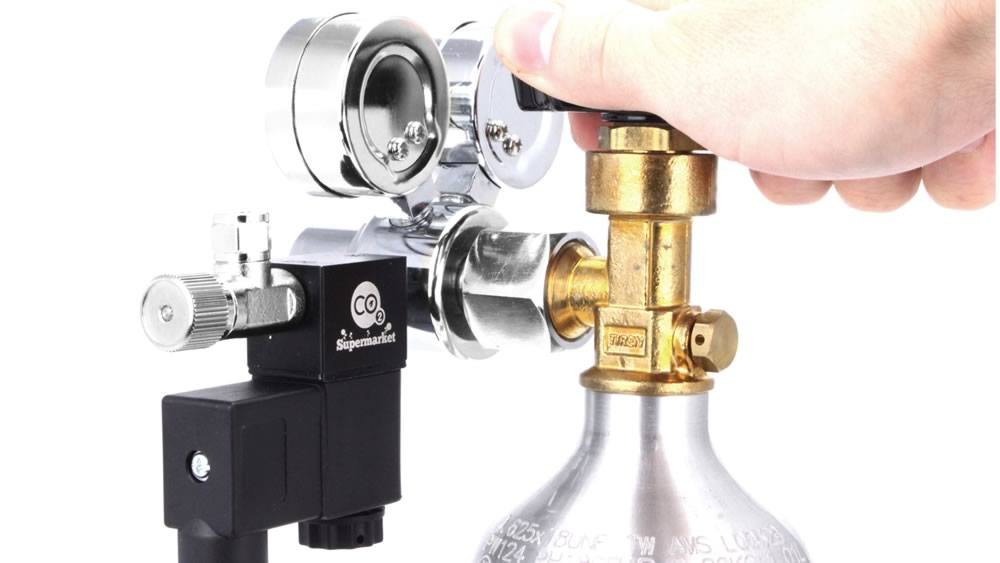
Step 4) Open the flow of gas from your CO2 cylinder.
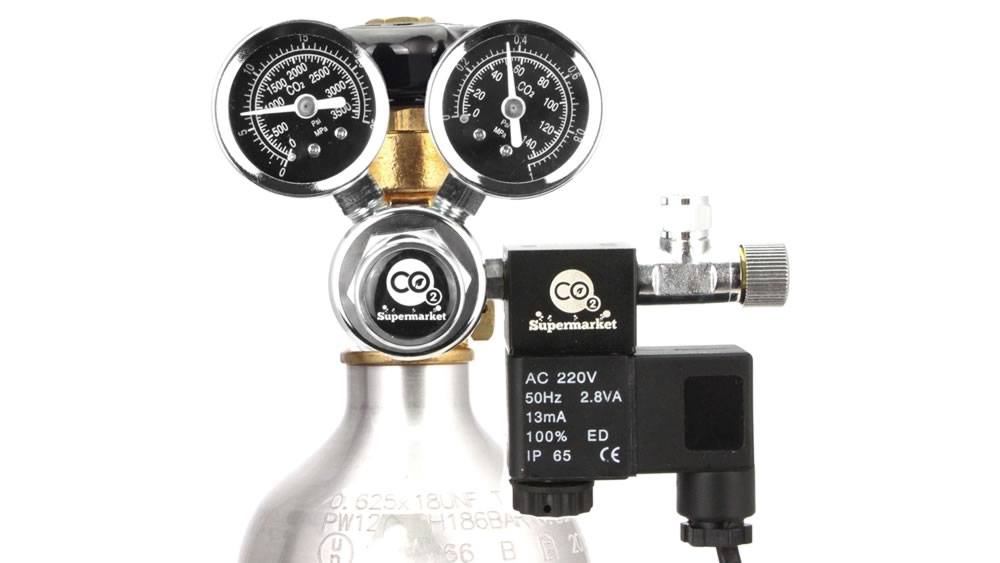
Step 5) The cylinder and output working pressure will be displayed on the corresponding pressure gauges.
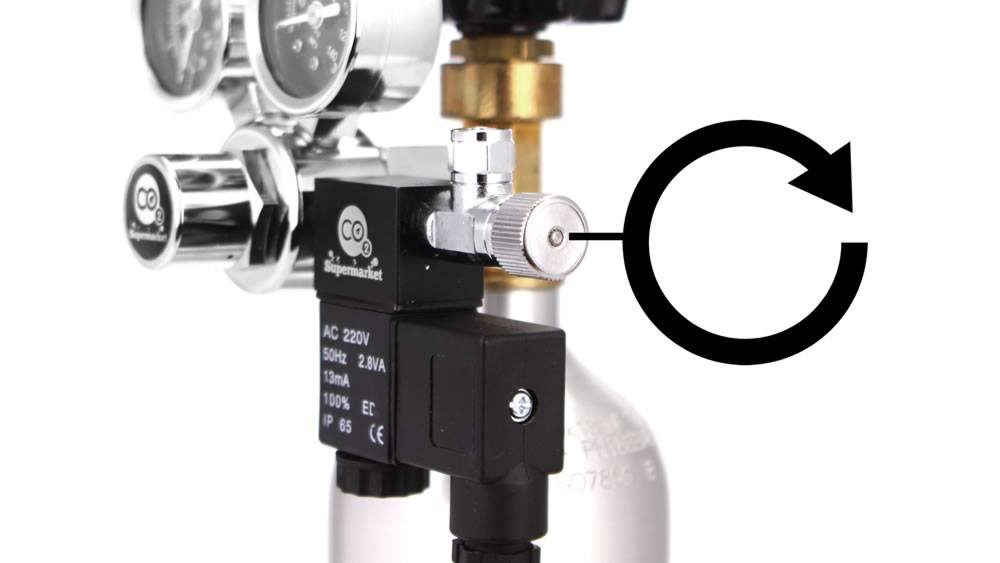
Step 6) Stop the flow of gas by turning the needle valve fully clockwise.
Your regulator is now ready for use.
With the bubble counter and diffuser installed, turn the needle valve anticlockwise to allow gas to flow out of the regulator and to the diffuser via the bubble counter. Once you see bubbles coming from the diffuser it indicates the system is fully pressurised and you can then set your desired bubble rate by adjusting the needle valve.
As a rough guide, 1 bubble per second is suitable for a 150L aquarium - adjust your dosing in accordance to this, i.e. 2 bubbles per second for 300L aquarium.
Your regulator is now ready for use.
With the bubble counter and diffuser installed, turn the needle valve anticlockwise to allow gas to flow out of the regulator and to the diffuser via the bubble counter. Once you see bubbles coming from the diffuser it indicates the system is fully pressurised and you can then set your desired bubble rate by adjusting the needle valve.
As a rough guide, 1 bubble per second is suitable for a 150L aquarium - adjust your dosing in accordance to this, i.e. 2 bubbles per second for 300L aquarium.
Be Kind to Your Regulator
When you release the gas from CO2 cylinder, the regulator and pressure gauges take the full force of ~900 PSI in just a fraction of a second. When you consider that a car tyre is ~30 PSI, you can appreciate that's a lot of pressure to suddenly deal with, and that impact of pressure can cause damage to the internal mechanism of the regulator and/or pressure gauges.If you perform Step 2 and Step 3 then it gives the gas an escape route and lessens the sudden surge of pressure that the regulator and pressure gauges must absorb when the gas is first released from the cylinder. Once the regulator is pressurised you can immediately close the needle valve or turn off the solenoid to stop the flow of gas.
Remember to perform these steps every time you change the CO2 cylinder.
If you are using a CO2 fire extinguisher for your CO2 supply, then ensure you slowly and gently squeeze the levers to release the gas. Fire extinguishers are designed to release the gas very quickly, and squeezing the levers to release the gas very suddenly can cause damage to occur to the regulator and/or pressure gauges.
Check for Leaks
It is recommend that each time you reconnect the regulator to the CO2 supply that you check for leaks. Identifying a leak from the outset is a much more desirable result than discovering there is a leak only when a substantial amount (or all) of your CO2 cylinder has leaked.The easiest way to check for leaks is to cover all of the joins with soap suds, and look for any sign of bubbling, and also listen for a 'hissing' sound. If your regulator has a solenoid it is recommended that you switch off the electricity supply prior to applying soap suds. Please also try to only use the soap suds themselves, and as little water as possible.
Disconnecting from the CO2 Cylinder
If you wish to disconnect the regulator from the gas cylinder it is important you first purge the gas within the regulator. To do this, close the valve on the gas cylinder and then open the needle valve on the regulator to use the residual gas. Once the pressure gauges on the regulator show zero pressure it is safe to disconnect the regulator from the cylinder.
Someone added a product to their cart
View ProductSomeone added a product to their cart
View Product

